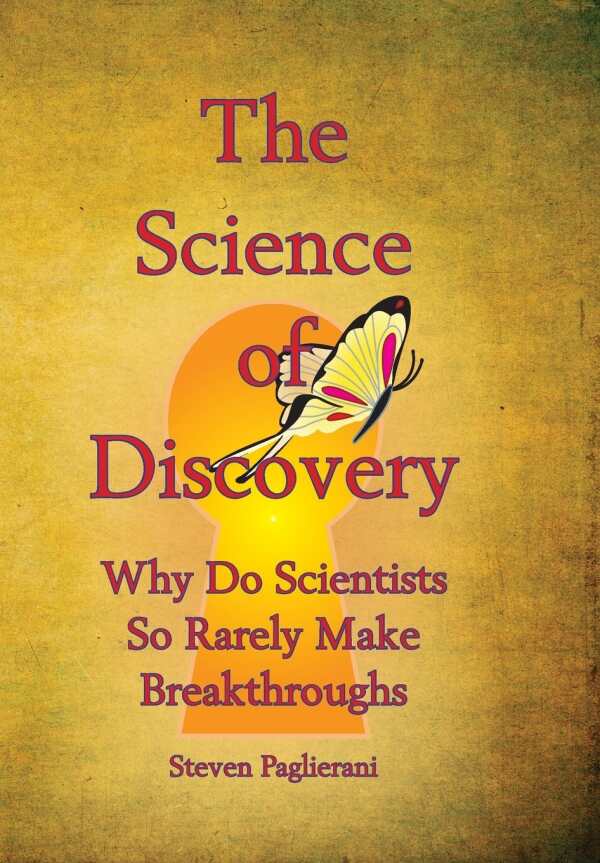The Science of Discovery
Why Do Scientists So Rarely Make Breakthroughs
The Science of Discovery raises a thought-provoking idea that begs for further analysis and research studies.
Writer, teacher and social worker Steven Paglierani’s profound enthusiasm for science and learning is elucidated in his latest book, The Science of Discovery: Why Do Scientists So Rarely Make Breakthroughs.
Inspired by a science teacher who told him he “would make a great scientist,” he makes the case that “science—as it’s practiced today—is the business of having fortunate accidents.” His theory? The provocative claim that the current scientific method, with its emphasis on seeking answers, is flawed, leading to very few true scientific discoveries. His solution is to explore a new scientific method that “makes science the business of connecting single points in meaningful patterns.”
Paglierani calls this method “constellated science.” Based on logical geometry, it uses logic to arrange data into geometric patterns. He claims these arrangements of interconnected points can be used to spark discoveries out of meanings that might otherwise seem hidden. He feels the “hope of discovering connections” opens the mind, whereas a focus on answers leads to closure and a lack of discovery, the main fault of the current methodology.
By using his method of mapping out connections, Paglierani claims scientifically sound discoveries can be made “every time out.” He even suggests logical geometry can be used to free the mind of personal problems and help with parenting issues, likely a direct result of his observations as therapist. To put his method in context, he covers the topics of weight loss, cancer, sleep, and deafness through examples stemming from his own personal experiences and interactions with others, mixed in with a few scientific studies. However, it would have been more realistic and credible if the book had corroborated his theories with additional outside case studies and factual statistics. For example, the book claims that “close to 100% of the efforts made by scientists fail to discover anything,” but doesn’t cite the source of this figure.
The book’s beginning section, which focuses on how the six logical geometries emerge in the constellated science method, is quite long and rambling, but the ample number of diagrams peppered throughout the text help illustrate Paglierani’s explanations. And the book’s unusual chapter and page numbering scheme (it begins on page 529) makes the flow and sequence of data rather confusing. However, as Paglierani explains, he originally intended the book to be a single volume, but the large amount of data got away from him, and this book is actually the third in the series.
He doesn’t provide any concrete answers, but that’s not his goal, acknowledging he now feels “more able to comfortably remain in a state of unsatisfied curiosity.” The Science of Discovery raises a thought-provoking idea that begs for further analysis and research studies.
Reviewed by
Becky Diamond
Disclosure: This article is not an endorsement, but a review. The publisher of this book provided free copies of the book and paid a small fee to have their book reviewed by a professional reviewer. Foreword Reviews and Clarion Reviews make no guarantee that the publisher will receive a positive review. Foreword Magazine, Inc. is disclosing this in accordance with the Federal Trade Commission’s 16 CFR, Part 255.

